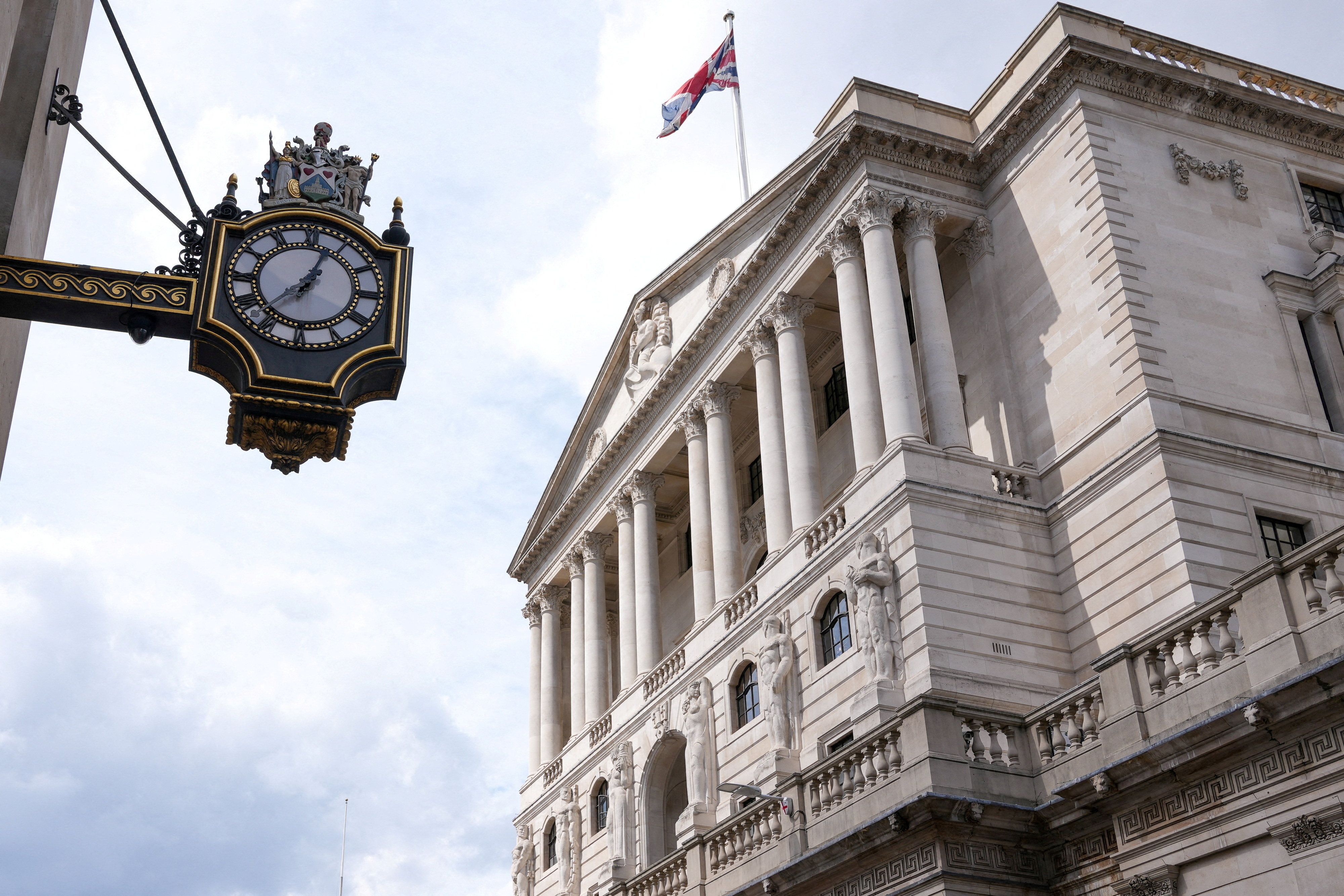Building a diversified bonds portfolio


Having bonds in one's portfolio was a conventional way to achieve diversification, but bonds have been positively correlated with equities over the past few years, following central bank intervention via quantitative easing.
But now inflation is a very real factor and this has its own consequences for bond prices and yields, raising questions over which bonds to invest in, should one want to do so.
Questions arise over whether government bonds are worth buying – the withdrawal of government from the market means that prices are likely to go down, with the only likelihood of increased prices from a looming recession.
High-yield bonds are the alternative, and fund managers are optimistic about valuations, despite looming recession.
Achieving diversification in bonds is a careful balancing act, given the changing variables in the economy. In this report, we aim to describe some of the ways to navigate the field.
Advisers cautious over UK market
The fall in valuations of the stocks listed on the FTSE 100 in recent years has not tempted many advisers to increase their allocation, according to the latest FTAdviser Despatches poll.
The poll, which was conducted online, found that 35 per cent of respondents are reducing their exposure to the FTSE 100, a further 39 per cent are taking now action.
The FTSE All Share has fallen from favour with many investors in recent years due to its sector mix, with a lack of technology companies and a proliferation of companies in less fashionable areas such as High Street retail and banks.
The sharp sell-off in technology stocks over the past year may have caused some pause for thought among allocators, but that has not fed through to sentiment among the advisers who responded to the poll, where caution abounds as to the prospects for the UK market.
Private equity firms have been active in buying UK assets in recent years, which also has the effect of removing some of the more investable companies from the market.
The decline in the value of sterling also makes those assets relatively cheaper for US private equity businesses.

What role can government bonds play in your portfolio?
On the surface, the direction of government bond prices is pretty clear-cut in the coming months and years.
As governments in the UK, Europe and the US commit to spending billions on shielding populations from the straddling rise in energy prices, that cash will have to come – at least in the short-term – from issuing more bonds, thereby increasing the supply of the asset class.
That is happening at the same time that, bewitched by inflation, central banks are restricting or ending their bond-buying programmes – a process known as quantitative tightening, to distinguish it from quantitative easing.
This was the programme instigated by policymakers in the aftermath of the global financial crisis, when they bought hundreds of billions of dollars worth of fixed income securities.
So with supply increasing markedly at the same time that a significant buyer of the asset is exiting, the intuitive response from advisers and their clients is to think that prices must fall from here.
You shouldn’t buy something just because of a recession
If government bonds are about to fall from here, it will make a frustrating period for investors in the asset class. Quantitative easing contributed to a decade where the yield, or income, available from government bonds was meagre.
Now yields have risen, with the UK 10-year gilt yield hitting levels not seen for a decade, but to access that income the risk is that clients would have to tolerate a capital loss, and certainly a lot of volatility.
The factor most likely to make government bond prices rise is an economic downturn, as markets would then begin to anticipate central banks cutting interest rates, and buy the government bonds issued today, to lock in the income available at today’s higher interest rates.
Bonds and equities
It is from this principle that the idea of the inverse correlation between bonds and equities arises.
It is a correlation that has been challenged by the events of the past 15 years, initially as QE caused bonds and equities to rise in tandem, and then, more recently, the unwinding of QE contributed to the situation where those asset classes fell in tandem.
If such an inverse correlation no longer exists, and given the fundamental supply and demand imbalance, is there a role for government bonds at all?
And while sovereign debt is just one area of the bond market advisers can access on behalf of clients, what happens to gilts then impacts the pricing of the rest of the asset class – and an investor choosing corporate debt instead is taking on more exposure to the performance of the wider economy.
Diversification
So what does a diversified fixed income portfolio look like right now?
Colin Graham, head of multi-asset at Robeco, says the traditional inverse correlation between bonds and equities will likely return as QE is dismantled, and this reasserts the role of government bonds in a diversified portfolio; clients can expect government bonds to perform well, in price terms, if a recession occurs and equities are declining in value.
The present lack of inverse correlation is because investors are focused on inflation, Graham says, but as they focus on recession the picture will likely change.
Companies have been doing the right things in recent years, paying down debt and so are in quite a healthy place
Andrew Balls, chief investment officer for global fixed income at Pimco, says he has been adding government bond exposure to the balanced portfolios he runs.
Balls is moving from an underweight position to something closer to a market neutral one.
He says the primary reason for this is the higher yields available, though he also expects a recession to occur in the US, UK and Europe, and in such a climate, prices would be expected to rise.
Rob Burgeman, investment manager at Brewin Dolphin, has not made a call on the likelihood of recession, but has been buying more government bonds anyway – his view being that at present levels yields pay an attractive enough income.
As the yields on government bonds have risen, so have the yields on corporate bonds.
But Chris Higham, who runs the Strategic Bond fund at Aviva Investors, is maintaining his stark underweight position to government bonds.
He accepts the view that the price of such assets could rise in the event of a recession, but says: “You shouldn’t buy something just because of a recession. The key would be the depth of the recession, that is what would influence the price of government bonds.”
Jon Jonsson, fixed income investor at Neuberger Berman, says one option for investors looking for diversification from their government bond exposure is bonds of countries such as China, where the economies may be moving in a different direction to that of the rest of the world.
Risk waiting
The challenge bond investors face, according to Ed Craven, fund manager at Invesco, is to decide whether to protect against inflation (known as duration risk) or to protect against recession risk (known as credit risk).
If one’s priority is protection against inflation, then the typical approach is to own bonds with a short date to maturity, as the income from these, and therefore the price, is more protected from rate rises.
By contrast, if a market participant takes the view that recession is the greatest source of risk, then the traditional approach is to buy longer-dated bonds as in the event of a recession the market’s view would be that interest rates will be cut.
In such a scenario, the longer the date to maturity of a bond in existence today, the greater capacity there is for that bond to rise in value in price terms, as it locks in the interest rate paid on today’s bond into the future, even if interest rates fall.
Craven says his view and that of his colleagues in recent years has been that interest rates may rise, so the primary risk to protect against in bond markets was inflation, and that was one of the reasons bonds have struggled generally this year.
Even if the inflation monster remains free, 5 per cent annually goes some way to mitigating its ravaging effect
Craven runs a multi-asset income fund at Invesco, and so can choose to invest in bonds or not. In recent months, as bond prices have fallen, he has begun to buy more, specifically selling off some of the equity investments in his fund to do this.
He says government bond prices have fallen to such an extent that “they are now pricing in quite a few rate hikes, so protection from those seems less important than before”.
Craven has also begun to increase the level of credit risk in his bond portfolios, partly because selling off equities reduces risks on that side.
He says one of the challenges of owning government bonds over the past year or so is that even in developed markets volatility has been high, and one of the traditional reasons for owning government bonds, as a hedge against volatility in a balanced portfolio, has been diminished.
Gopi Karunakaran, co-chief investment officer at Nordea Asset Management, says the key to understanding the diversification benefits of government bonds is that in normal times the yields are high immediately prior to a recession, and as investors exit the most economically sensitive assets and buy bonds, the yields fall, and the prices rise.
He notes the problem with such a plan over much of the past 15 years has been that government bond prices were already so high that one had to take on considerable risk to buy them.
But Karunakaran adds that government bond prices having fallen so far this year that the yields are now sufficiently high as to restore those historic diversification benefits.
High yield
At the other end of the spectrum from government bonds are high-yield bonds. They are at the opposite end of the spectrum because they typically have almost the same economic sensitivity as equities.
But this should not detract from the investment case, according to Balls, who says investors should focus on the returns available from this part of the market rather than the diversification element.
He says that rather than trying to decide whether one wants bond exposure that protects against inflation or recession, “it is possible to do both.
It would need to be a very deep recession to justify being underweight on high-yield bonds
"You can do it because the shock that is impacting the UK economy and bond market is impacting other markets.
"But in terms of the attractiveness of high-yield bonds, we are being careful now in the portfolios I run, but in the higher risk portfolios we have increased our high-yield exposure."
Aviva’s Higham says that with valuations where they are, “it would need to be a very deep recession to justify being underweight on high-yield bonds right now.
"We are neutral on high yield right now. The thing is, companies have been doing the right things in recent years, paying down debt and so are in quite a healthy place."
Brian Nold, a portfolio manager at Muzinich & Co, puts some context around the health of the high-yield market.
Despite that being the area where the risk of default by the companies borrowing should be highest, Nold says the long-term annual average default rate is 3 per cent of the bonds issued, while at the present time, default rates are at just 1 per cent.
Eleanor Ingilby, deputy head of portfolio management at Atomos, says that while the price of a bond may fall, a client invested for income does not necessarily need to care about this, as long as they continue to receive the income.
Unless hyper-inflation sets in, bonds still provide a lower risk option to mitigate the inflation pain
Ingilby says high-yield bonds look attractive right now. “Investors who can ignore the mark to market moves and who purchase investment-grade bonds to hold to maturity are locking in fairly certain returns of around 5 per cent in the UK.
"Even if the inflation monster remains free, 5 per cent annually goes some way to mitigating its ravaging effect.
"When the bond eventually matures, if inflation is still wild, then bond markets are likely to have adjusted further, perhaps giving you the chance to reinvest at 10 per cent. Unless hyper-inflation sets in, bonds still provide a lower risk option to mitigate the inflation pain."
david.thorpe@ft.com

(Reuters/Maja Smiejkowska)
(Reuters/Maja Smiejkowska)

(Allie Joseph/New York Stock Exchange via AP)
(Allie Joseph/New York Stock Exchange via AP)

(Hollie Adams/Bloomberg)
(Hollie Adams/Bloomberg)
Why have returns from inflation-linked bonds been so abysmal?
With inflation rampant, you might imagine that inflation-linked bonds – or 'linkers' – had performed well this year. Surely, these are precisely the conditions when the ‘insurance’ they promise in client portfolios finally pays up?
Sadly, as the table shows, the story has been very different. Had you bought 50-year inflation-linked bonds at the beginning of the year you would have lost more than half your money (52.7 per cent). They have tended to underperform even their non-inflation-linked equivalents. Why?
Table 1: Year-to-date returns from UK gilts
|
|
Index |
Two-year |
10-year |
50-year |
|---|---|---|---|---|
|
Inflation-linked |
-23.94% |
+6.68% |
-9.17% |
-52.70% |
|
Conventional |
-18.55% |
-3.32% |
-12.94% |
-39.50% |
|
(31/12/2021 to 31/08/2022) |
||||
Inflation-linked bonds derive their returns from three elements, the first two of which they share with conventional bonds:
- Income (a function of the ‘coupon’).
- Capital gains (or losses).
- The inflation accrued over the holding period.
Inflation-linked bonds are therefore bonds first and a form of inflation protection only later.
This is underlined by data showing that 95 per cent of the time they move in the same direction as conventional gilts (although not necessarily by the same magnitude) – see our chart below.
The problem is that bonds and inflation do not tend to get on well. Inflation encourages central banks to tighten monetary policy and raise interest rates. If interest rates rise then the attractiveness of the bonds you hold falls. And that can be especially painful if bonds have a long maturity.
This year’s high levels of inflation and the repeated, upward surprises relative to economists’ forecasts have increased the value of inflation-linked bonds relative to nominal bonds.
At the same time, though, those inflation surprises have also triggered a far more forceful response from the Bank of England, driving down the value of longer maturity inflation-linked bonds.
It is important to remember that the overwhelming driver of total returns for long-duration inflation-linked bonds is not inflation accrual. Rather, it is the capital gain (or loss) derived from the move in yields.
Rising interest rates are less damaging for short-maturity bonds, so here inflation accrual plays a far more prominent role. This is why – year to date – inflation-linked gilts with two years to maturity have generated a healthy return of nearly 7 per cent, while their equivalent conventional gilts have lost more than 3 per cent.
The orange line shows actual RPI. The peach line shows current expectation for how RPI will evolve over the rest of this year. The black line shows that RPI was expected to peak at a lower level and significantly earlier when the year began (January 5 2022).
Managing expectations
Another important fact to consider is that changes in the market’s expectations of inflation can matter more than actual inflation.
So if you are looking to buy inflation-linked bonds your decision should be determined less by the actual level of inflation and more by your expectations of how inflation will evolve relative to what the bond market is implying.
You can gauge the market’s expectations by measuring the difference between the nominal yield of a conventional bond relative to the real yield of inflation-linked bonds with the same maturity.
For example, the January 2028 nominal gilt yield is +2.8 per cent while the inflation-linked gilt with the same maturity yields -1.58 per cent. So the market is suggesting that RPI will average 4.38 per cent over the next six years. We call this the ‘breakeven’.
We should usually consider owning the inflation-linked bond relative to the conventional equivalent only if we believe that average inflation over the period is likely to be higher than the breakeven.
There is one significant exception to this rule. There may be times when we do not expect inflation to exceed the market view, but we want some insurance against that being the case. How much investors are willing to pay to insure against the risk of inflation being higher than their central case will vary.
The higher inflation reaches, the more unpredictable it tends to become, thereby increasing the value of the option attached to inflation-linked bonds relative to nominal bonds.
Is there any point in investing in inflation-linked bonds?
Unquestionably, yes. But it is important to remember that this is a highly technical market. There are usually two good times to invest in inflation-linked bonds.
- During QE. Quantitative easing tends to be good for all asset prices and incredibly supportive for inflation-linked bonds. This is particularly the case if you buy inflation-linked bonds close to the initial announcement of QE. Central banks usually announce QE when disinflationary fears are at large and inflation breakevens are below central banks’ targets. QE provides liquidity (it is, in essence, printing money) and increases the skew of inflation to the upside. The current environment is diametrically opposite to this. It should therefore be no surprise that inflation-linked bonds have performed badly recently.
- In a stagflationary environment. At some point central banks might have to move their focus from controlling inflation to supporting growth. It is easy to commit to controlling inflation unconditionally when it is a political issue and the economy is at full employment. It is perhaps less easy if the economy slows and unemployment ticks higher, even if inflation remains above target. In that environment central banks may – either voluntarily or under political pressure – tighten policy less than expected or start loosening it. If inflation breakevens at the time are compelling then inflation-linked bonds could perform well from that point.
So when you buy inflation-linked bonds – and what maturity of bond you buy – can make a huge difference to total returns. Most have had a poor year, but the time to add some inflation protection to portfolios again might not be that distant.
Juan Valenzuela is a fund manager on the Artemis fixed income team


